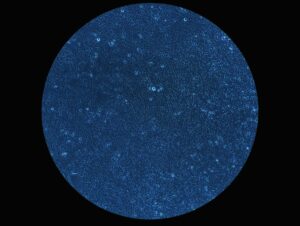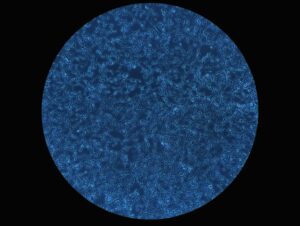Week 7- Taking and Making Genetic Material
Anita M -
Hello! In my last post, I mentioned treating my cells with tunicamycin (TM) to stress the cells, emulating the effects of a heart attack. The TM treatment worked well and we didn’t experience a significant amount of cell death which was good!
Below are pictures of my cells. The picture on the left is cells without the TM treatment and the right picture is cells with the TM treatment. As you can see, the TM-treated cells look stretched out and almost web-like in comparison, indicating high levels of stress.
We left the TM on for 24 hours and extracted mRNA from them the following day.
As a quick reminder, DNA (our genetic material) is used to make proteins within our body. But for DNA to do that it has to use messenger RNA (mRNA).
DNA –> mRNA –> Protein
What we did in this project was insert a certain kind of DNA in our cells to make a particular protein (GRASP55). Now, we want to see if that inserted DNA also caused certain other proteins to be made. We can observe that by looking for specific mRNA in the cells.
So, we extracted the mRNA. But RNA is really unstable, so we had to turn it into complimentary DNA (cDNA). Currently, my cDNA is sitting in a freezer waiting to be analyzed, which is what I’ll be doing this week!
Using a process called qPCR, we are going looking for changes in the mRNA of 4 genes: ATF6, GRP78, GRP94, and ANP. If there is any change in the levels of mRNA of these genes, we can hypothesize there is potential link between GRASP55 and the genes!



Comments:
All viewpoints are welcome but profane, threatening, disrespectful, or harassing comments will not be tolerated and are subject to moderation up to, and including, full deletion.